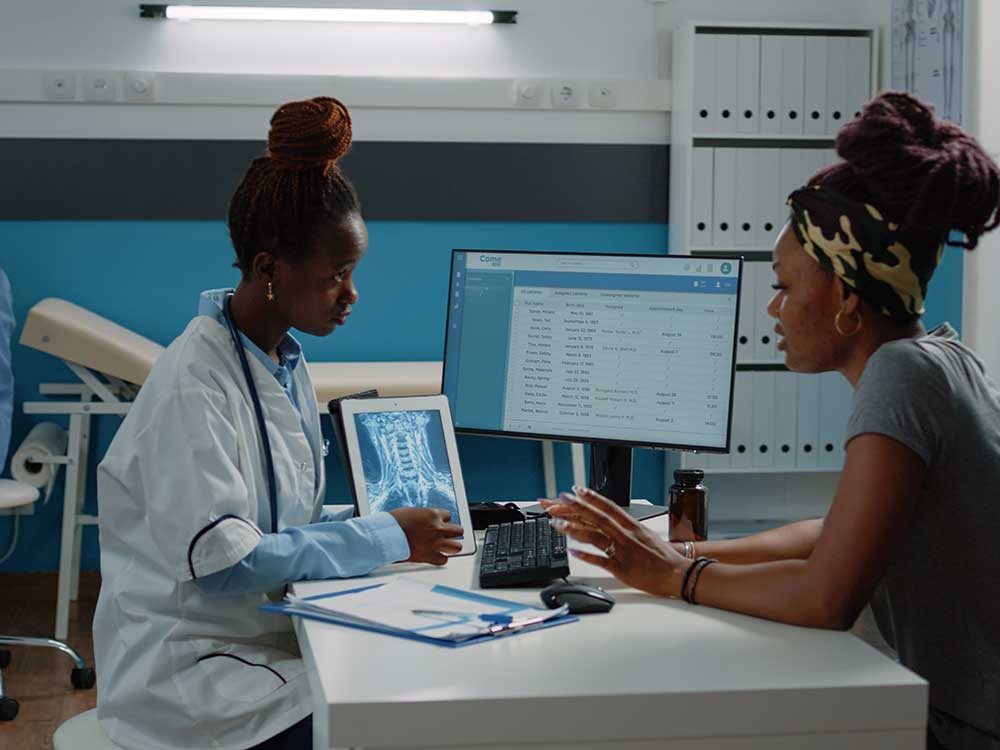Medical Administration Programs: What to Try to find in a High quality Course
Medical Administration Programs: What to Try to find in a High quality Course
Blog Article
Best Practices in Medical Administration for Improving Performance and Lowering Costs
In the ever-evolving landscape of health care, the quest of ideal practices in medical administration is vital for enhancing performance and curbing costs. By incorporating advanced technologies such as electronic wellness documents and telemedicine, medical care carriers can improve operations and improve individual care.
Leveraging Advanced Innovation
The integration of digital options into medical care systems has actually transformed the method centers run, enhancing procedures and enhancing person treatment. By centralizing individual information, EHRs get rid of the demand for troublesome paperwork and promote smooth interaction among health care providers.
Telemedicine is one more technological development that has reinvented person communication. It supplies benefit for both clients and healthcare professionals by making it possible for remote assessments, which can decrease the need for in-person visits and enhance consultation scheduling. Additionally, telehealth systems can prolong healthcare accessibility to rural or underserved areas, connecting voids in care shipment.
Furthermore, making use of Expert system (AI) and artificial intelligence is coming to be significantly widespread in predictive analytics, enabling very early detection of possible health concerns and even more educated decision-making. These technologies, when integrated effectively, can boost analysis precision and personalize individual therapy strategies, ultimately causing improved medical care results and operational effectiveness.
Optimizing Resource Allocation
Reliable source allocation is important for making best use of the efficiency of clinical administration. By tactically taking care of sources such as employees, devices, and financial resources, health care facilities can considerably boost their functional performance, improve individual results, and decrease unneeded expenditures. The primary step in optimizing resource allowance includes carrying out a detailed analysis of current possessions and determining areas where resources may be underutilized or overextended. This assessment ought to be data-driven, making use of metrics and analytics to educate decision-making procedures.
Focusing on resource appropriation based on client requirements and solution demands is necessary. Executing adaptable staffing models can likewise enhance labor resources by adjusting workers allowance in response to fluctuating patient volumes.
Financial sources ought to be carefully checked and assigned with tactical foresight to sustain both short-term operational needs and lasting institutional goals. This consists of investing in training programs that improve team competencies and embracing energy-efficient methods that lower operational costs (medical administration). Ultimately, an enhanced resource allotment approach promotes a sustainable medical care setting that is responsive, effective, and monetarily sensible
Streamlining Operations Processes
When medical care facilities objective to improve functional effectiveness, improving operations processes ends up being a critical emphasis. Reliable process minimize redundancy, get rid of unneeded steps, and enhance sychronisation amongst healthcare specialists. This method not only increases solution delivery but also improves the quality of patient care.

Next, technology combination plays a visit homepage considerable function in enhancing process. Implementing electronic health documents (EHRs) and computerized doctor order entrance (CPOE) systems reduces documents, minimizes human mistake, and makes sure information is available to all relevant employees. Additionally, leveraging telemedicine systems can enhance client appointments and follow-ups, decreasing the pressure on physical infrastructure.

Inevitably, structured process lead to set you back reductions and improved patient contentment, cultivating an extra lasting medical care atmosphere.
Enhancing Data Monitoring
Structure upon streamlined process, maximizing information monitoring becomes a crucial component in progressing health care administration. Reliable data management systems are important for keeping exact person documents, improving decision-making, and making sure conformity with governing criteria. By carrying out durable information administration services, medical care facilities can boost the high quality of person care while concurrently decreasing functional costs.
One key element of enhancing data monitoring is the combination of advanced electronic health record (EHR) systems. These systems help with the seamless exchange of person details throughout different divisions, decreasing replication of examinations and minimizing errors. A well-designed EHR system supports data analytics, making it possible for medical care companies to determine patterns and make educated choices relating to person treatment.
In addition, guarding person information is vital. Embracing comprehensive cybersecurity steps, consisting of file encryption and normal audits, ensures the honesty and discretion of sensitive details. This not only protects individuals but also maintains the organization's track record.
Purchasing personnel training is one more essential factor. Informing medical care specialists on data management techniques enhances their ability to efficiently use technology, bring about improved person end results. Finally, enhancing click for info data administration with advanced innovation and comprehensive training is important for attaining efficiency and price reduction in medical management.
Fostering Collaborative Communication
An important component in progressing clinical administration is promoting joint communication among healthcare experts. Effective communication is critical for ensuring seamless patient treatment, maximizing therapy results, and minimizing mistakes. By encouraging open dialogue and coordination throughout multidisciplinary groups, medical care organizations can enhance their functional performance and lower unnecessary expenses.
Central to this method is the combination of interaction modern technologies such as electronic health documents (EHRs) and secure messaging platforms, which promote the quick exchange of critical person info. These tools allow medical care official statement carriers to gain access to and share data in actual time, making certain that all team participants are informed and straightened in their decision-making processes. Normal team conferences and interdisciplinary rounds can better advertise a culture of collaboration and responsibility.
Educating programs concentrated on improving communication skills are also vital. These programs can aid staff create the ability to share information plainly and listen proactively, therefore reducing misconceptions and cultivating a helpful job environment. Furthermore, taking on standard communication protocols, such as SBAR (Circumstance, Background, Assessment, Referral), can streamline the exchange of details, making sure that crucial information are communicated succinctly and efficiently. Eventually, cultivating joint interaction results in boosted healthcare shipment and price savings (medical administration).

Conclusion
Including sophisticated innovation, such as electronic wellness documents and telemedicine, alongside optimized resource allotment and structured operations procedures, is vital for enhancing performance in medical administration. Efficient information monitoring and fostering joint interaction amongst health care teams are vital for reducing redundancies and improving treatment top quality. By prioritizing precautionary treatment and involving in quality improvement efforts, healthcare organizations can accomplish significant price savings and improved person outcomes, consequently making sure lasting medical care shipment in a progressively complex atmosphere.
Report this page